7 Essential Travel Safety Tips for the Galapagos Islands
The Galapagos Islands and the unique wildlife that helped Charles Darwin develop his theory of natural selection (or evolution) are in a vast national park controlled, administered and protected by Ecuador.
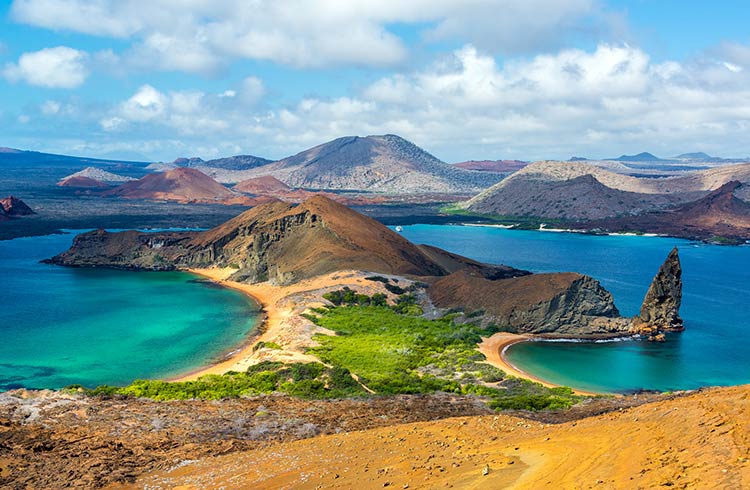 Photo © iStock/DC_Colombia
Photo © iStock/DC_Colombia
The Ecuadorian government do a great job of protecting this very important World Heritage area which consists of the Galapagos National Park, Galapagos Province of Ecuador and Galapagos Marine Reserve.
There are limits to the number of cruise boats which can loiter off the coast, caps on diver numbers, restrictions on the number of people who can set foot on the islands, and on land there are defined walking paths and trails to prevent people from entering breeding grounds or other animal sanctuaries. Step off the beaten path at your peril – transgressors are sent back to their boats or the next plane out.
From 2012, there have been rules set in place to prohibit ships from entering the same island twice in a 14 day period. The rules have been established to ensure minimization of human impact on the fragile and bio-diverse environment.
The rules mean that tour operators will have to drastically change their itineraries, but the regulations have been met with universal applause. The changes benefit visitors to the island, too – smaller numbers will mean an enjoyable experience unfettered by large crowds.
The park authorities have the safety of the animals as their primary concern – your safety is your own responsibility, so here are a few tips on avoiding a boo-boo while photographing a Booby.
- Sun safety in the Galapagos Islands
- Watch out for the wildlife
- Scuba diving/snorkel safety for Galapagos Islands
- Diver health in the Galapagos Islands
- Galapagos Islands petty crime
- Health while cruising the Galapagos
- Medical care in the Galapagos Islands
Sun safety in the Galapagos Islands
Wear sunscreen – lots of it. The islands lay across the equator, and the sun is ferocious. It will even burn you through clothing, so lather up in SPF 30, and wear a hat.
However, just because the islands are on the equator, but don't be fooled into thinking it'll be hot all the time.
December to May is the "warm season" and peak tourist season, with tropical temperatures and daily rain showers, so take a light windcheater or spray jacket. You'll be glad of its warmth at night, too, or when standing on a windy cliff top or boat deck.
Watch out for the wildlife
Swimming, diving or snorkeling with sea lions is a big hit with visitors, but watch out for the bulls – the obviously big and aggressive males. They are very jealous of their harems and will attack if you get too close. If you're in the water and a bull approaches, swim the other way.

The locals also insist the sharks are relatively friendly and generally they coexist peacefully. Sharks will only bite if provoked, if you are diving in murky water, diving at sunrise or sunset. Statistically, you are more likely to die from a falling coconut or drown.
Watch out for lizard snot. The iguana's have a habit of clearing their nostrils after a swim, and can send out a great spray of sea water. It's not toxic, but it plays havoc with digital cameras.
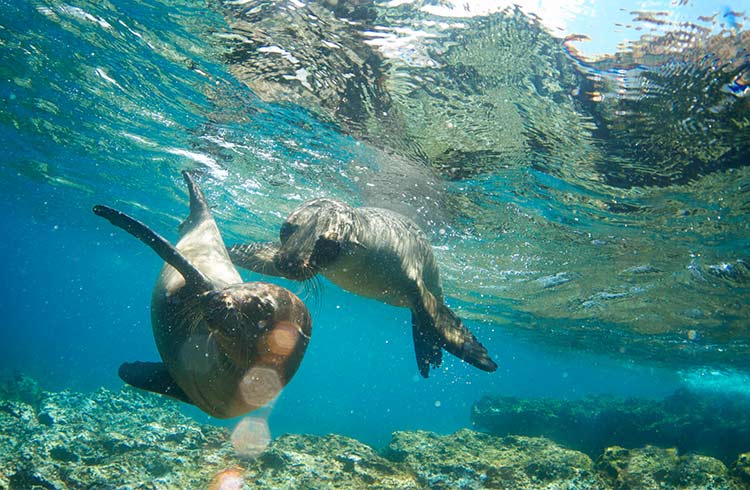
Scuba diving/snorkel safety for Galapagos Islands
Diving the Galapagos Islands gives you the opportunity to share the ocean with iguanas, hammerhead sharks, whale sharks, eagle rays and more. The Galapagos Islands has some of the greatest marine biodiversity on Earth.
We recommend you follow all the usual safe diving rules.
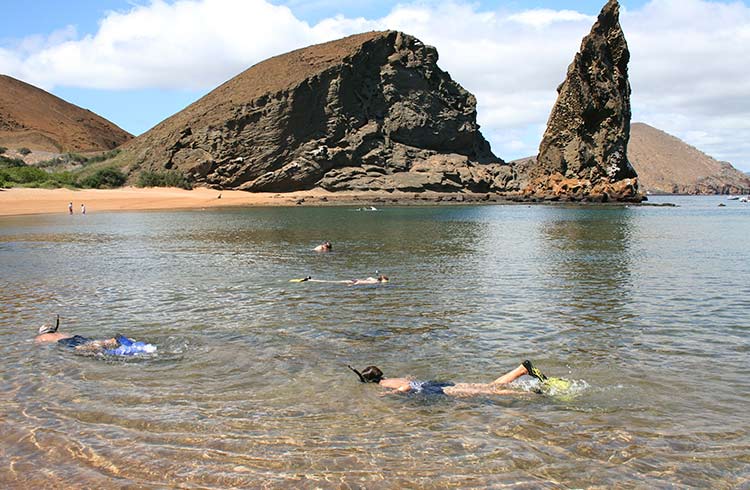
It also pays to watch out for the tides, currents and rips around the islands, they're strong. Divers get washed around and can lose touch with their ‘buddy' or even dragged out to sea.
Some dive tours supply surface marker buoys, EPIRBs or personal location devices in case you are washed away. Before you leave home for Ecuador check if your operator offers this service, if not consider buying or hiring one in your home country.
At some popular sites you can get more than one dive group in the water at the same time. If everyone's chasing the same fish/sea lion/whale shark through strong currents with everyone breathing hard, you can get suddenly blinded by a curtain of air bubbles from divers below. Don't blunder on and possibly run into trouble or get lost, there'll be another amazing sea creature along in a minute or two.
If you're not a diver you can still snorkel and see a different world. You can hire equipment on the islands, just check the cleanliness of it. Give the mouthpiece a scrub before using it to be sure (Those antiseptic wipes from your medical kit will come in handy).
Diver health in the Galapagos Islands
Many of the tour boats have an open bar, and the temptation to throw back a few drinks while swapping animal-spotting stories is strong.
Don't forget there are reasons why you shouldn't drink in the hours leading up to a dive. If you're feeling a bit tipsy, don't dive or snorkle. It isn't safe.
Because you'll be eager to dive every day, be prepared for a ‘dry' tour. Have a beer to celebrate when you return to the mainland.
It's also important to stay hydrated throughout the dive trip, so take enough water with you.
Galapagos Islands petty crime
Crime is not a problem on the islands. It's the kind of place where the 40,000 permanent residents leave their doors unlocked.
Onboard the cruise boats is also relatively safe, although there are no lockers and sometimes items do find their way to the crew quarters. Make sure you have one bag which can be locked while you're not in your bunk/cabin.
Health while cruising the Galapagos
If you choose a cruise boat, you're going to be at sea for between 4 and 8 days, and sometimes the weather can be rough.
The passages between islands can be as long as 17 hours (overnight). A lot of people who arent used to life aboard a boat get seasick, and if you're vulnerable to motion sickness, make sure you take some seasickness prevention medicines.
Although you might feel like you want to die, it's not life threatening, and it is important to try to keep your fluid levels up to avoid dehydration. Try to get on with some tasks which require your full attention, your mind will soon adjust and give your stomach a break.
8 days at sea will give you sea legs, a feeling of unsteadiness when you return to dry land. If the first bit of terra firma is Quito, you'll probably experience some light-headedness from the altitude, too. Not a great combination. Go and have a lie down and take it easy for a day or two.
Medical care in the Galapagos Islands
Medical care on the islands is limited. There are no facilities for acute cardiac or surgical care.
Those with serious illnesses must be evacuated to the Ecuadorian mainland or the U.S. That will be expensive, and come out of your pocket unless you have the right travel insurance.
There is a privately owned decompression chamber on Santa Cruz. The Ecuadorian Navy operates a second decompression chamber at the San Eduardo Naval Base in Guayaquil.
Related articles
Simple and flexible travel insurance
You can buy at home or while traveling, and claim online from anywhere in the world. With 150+ adventure activities covered and 24/7 emergency assistance.
Get a quote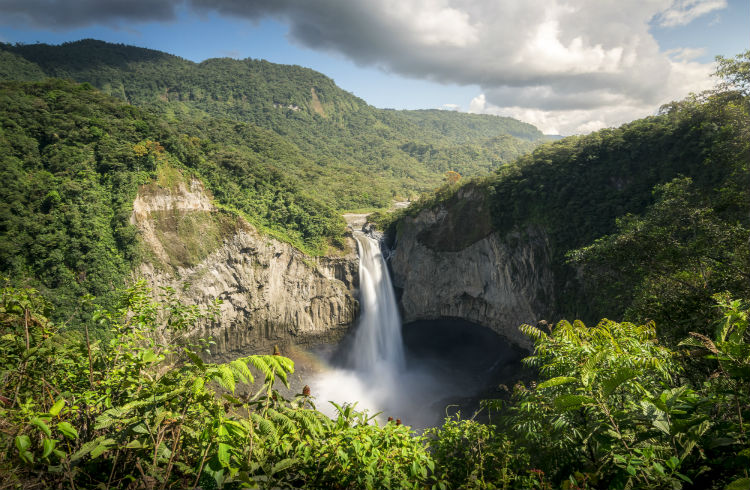
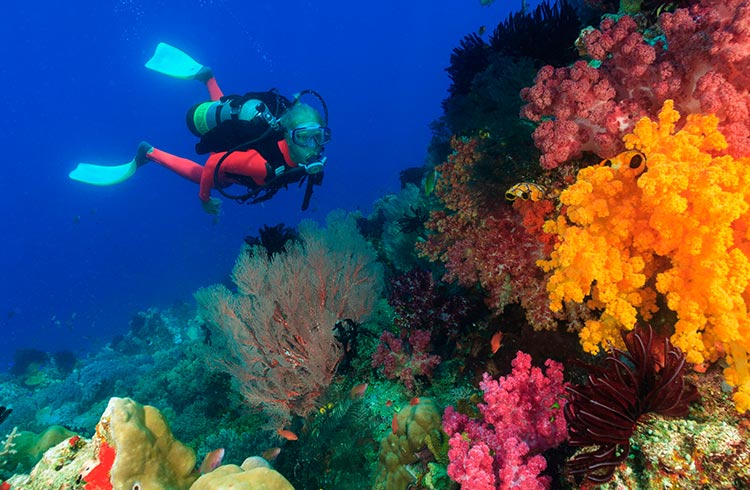
No Comments